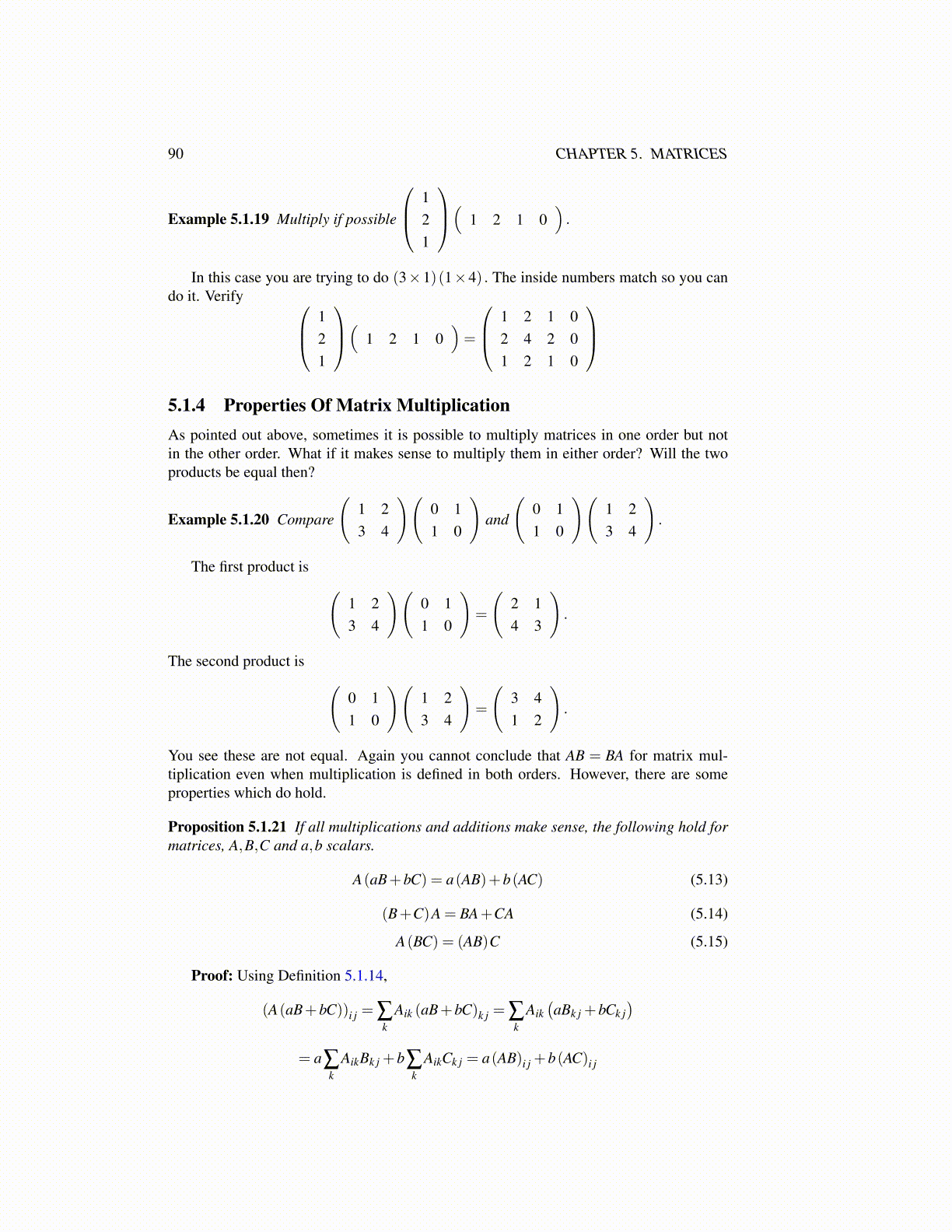
90 CHAPTER 5. MATRICES
Example 5.1.19 Multiply if possible
121
( 1 2 1 0).
In this case you are trying to do (3×1)(1×4) . The inside numbers match so you cando it. Verify 1
21
( 1 2 1 0)=
1 2 1 02 4 2 01 2 1 0
5.1.4 Properties Of Matrix MultiplicationAs pointed out above, sometimes it is possible to multiply matrices in one order but notin the other order. What if it makes sense to multiply them in either order? Will the twoproducts be equal then?
Example 5.1.20 Compare
(1 23 4
)(0 11 0
)and
(0 11 0
)(1 23 4
).
The first product is (1 23 4
)(0 11 0
)=
(2 14 3
).
The second product is (0 11 0
)(1 23 4
)=
(3 41 2
).
You see these are not equal. Again you cannot conclude that AB = BA for matrix mul-tiplication even when multiplication is defined in both orders. However, there are someproperties which do hold.
Proposition 5.1.21 If all multiplications and additions make sense, the following hold formatrices, A,B,C and a,b scalars.
A(aB+bC) = a(AB)+b(AC) (5.13)
(B+C)A = BA+CA (5.14)
A(BC) = (AB)C (5.15)
Proof: Using Definition 5.1.14,
(A(aB+bC))i j = ∑k
Aik (aB+bC)k j = ∑k
Aik(aBk j +bCk j
)= a∑
kAikBk j +b∑
kAikCk j = a(AB)i j +b(AC)i j